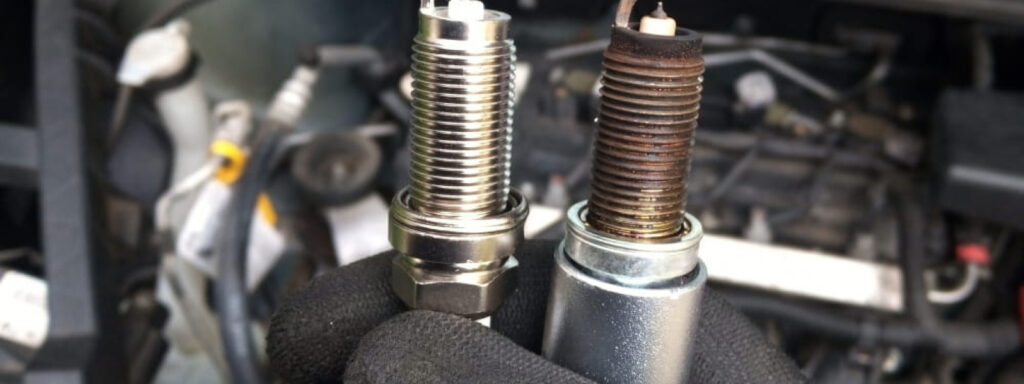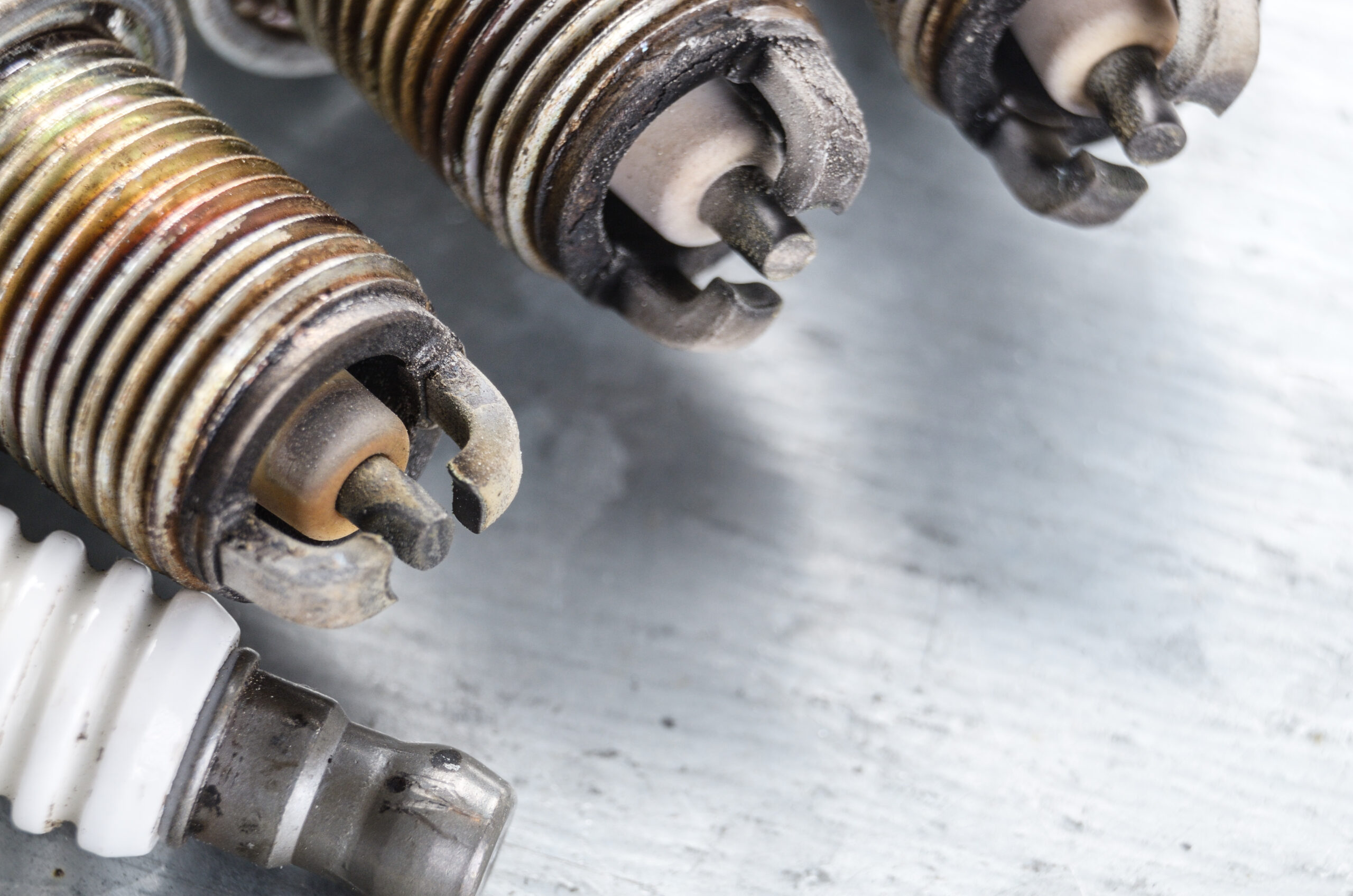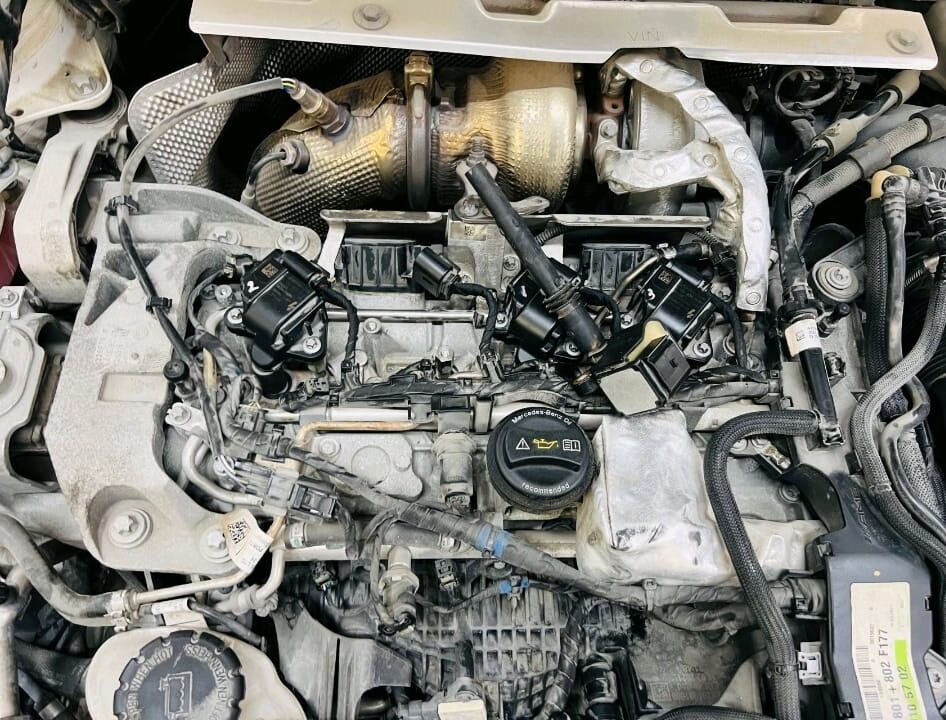Can you drive with bad spark plugs? While it is technically possible to drive with bad spark plugs, it is highly discouraged. Bad spark plugs can lead to engine misfires, poor fuel efficiency, and increased emissions, potentially causing long-term damage to your engine and other components.
Bad spark plugs are one of the most common yet overlooked car maintenance issues. While it might be tempting to think you can still drive with bad spark plugs, the truth is much more complicated. Spark plugs play a vital role in your engine’s ignition system, and driving with bad spark plugs can lead to costly repairs down the road.
In this detailed guide, we will explain the importance of spark plugs, what happens when they fail, the risks associated with driving with bad spark plugs, and the symptoms to watch for.

Contents
What Are Spark Plugs and Why Are They Important?
Spark plugs are small components found in the engine of most gasoline-powered vehicles. They are responsible for creating a spark that ignites the air-fuel mixture in the engine’s combustion chamber. This ignition is what powers the engine and allows the car to run.
The spark plug consists of several key parts:
- Electrode: The central part of the spark plug that carries the electrical current.
- Insulator: A ceramic piece that insulates the electrode and prevents the spark from traveling to the wrong area.
- Metal Shell: The outer metal part that connects the spark plug to the engine.
When the spark plug works properly, it helps to ensure that the engine runs smoothly, efficiently, and cleanly. However, over time, spark plugs wear out, become dirty, or get damaged, which can prevent them from functioning properly.
What Happens When Spark Plugs Fail?
When spark plugs go bad, they can cause several issues in your vehicle’s performance. If your spark plugs are faulty or damaged, the combustion process in the engine will be compromised. This can lead to a number of symptoms, including rough idling, decreased fuel efficiency, and a general decrease in engine power.
Here are some things that can happen when spark plugs fail:
- Misfires: Spark plugs that are not working properly can lead to engine misfires. This is when the engine fails to fire on all cylinders, leading to rough idling, jerking, and difficulty accelerating.
- Poor Fuel Efficiency: If the spark plug isn’t igniting the air-fuel mixture properly, the engine will burn fuel inefficiently, reducing gas mileage.
- Hard Starting: Worn or damaged spark plugs can make it more difficult for your engine to start, especially in colder weather.
- Increased Emissions: Faulty spark plugs can lead to unburnt fuel, which results in higher emissions and could cause your vehicle to fail an emissions test.
Signs You Have Bad Spark Plugs
Knowing the signs of bad spark plugs can help you catch the problem early, preventing more serious damage to your engine. Here are some common symptoms to watch out for:
- Engine Misfires: If your car jerks, stutters, or hesitates when accelerating, it may be due to misfiring caused by faulty spark plugs. Misfires occur when the air-fuel mixture isn’t ignited properly, leading to an uneven engine performance.
- Rough Idle: A bad spark plug can cause your engine to idle roughly, meaning it will shake or vibrate more than usual. This can be especially noticeable when the car is at a stoplight or idling in traffic.
- Difficulty Starting: If your car takes longer than usual to start or requires multiple attempts, bad spark plugs could be the issue. This is because faulty spark plugs might not produce a strong enough spark to ignite the fuel-air mixture in the engine.
- Decreased Fuel Efficiency: When spark plugs aren’t working properly, the engine can’t burn fuel as efficiently. This leads to higher fuel consumption and more frequent trips to the gas station.
- Check Engine Light: Modern cars have sensors that monitor the performance of spark plugs. If a problem is detected, such as a misfire, the check engine light will turn on. If this happens, it’s best to check the spark plugs.
Can You Drive with Bad Spark Plugs?
Technically, you can drive with bad spark plugs, but it’s highly discouraged. While the car may still run, the issues caused by worn or faulty spark plugs can worsen over time. Driving with bad spark plugs may result in:
- Increased Engine Damage: Driving with bad spark plugs can cause long-term damage to your engine, especially the catalytic converter. Unburned fuel can contaminate the converter, leading to expensive repairs.
- Strained Fuel System: A bad spark plug causes inefficient fuel combustion, leading to excessive fuel consumption. This puts stress on the fuel system and may eventually cause other components to fail.
- Decreased Performance: Poor acceleration, rough idling, and engine misfires will make driving uncomfortable. You may notice a lack of power or a sluggish response when you try to accelerate.
How Long Can You Drive with Bad Spark Plugs?
While you can technically drive with bad spark plugs for a short period, it’s not advisable. A rough engine performance might seem manageable for a short time, but it will likely lead to more serious problems if ignored. If your vehicle is showing symptoms of bad spark plugs, it’s crucial to replace them as soon as possible to avoid additional damage.
What Can You Do to Fix Bad Spark Plugs?
If you notice any of the symptoms above, it’s time to address the issue. Here are the steps to fix bad spark plugs:
- Inspection: Remove and inspect your spark plugs for signs of wear, such as carbon deposits, cracks, or corrosion. Spark plugs that are too worn or damaged should be replaced immediately.
- Replacement: Spark plugs should be replaced according to your vehicle’s maintenance schedule, typically between 30,000 and 100,000 miles, depending on the type of spark plug and your vehicle’s specifications.
- Cleaning: If the spark plugs are slightly dirty but not worn out, you can try cleaning them with a specialized cleaner before reinstalling them.
Frequently Asked Questions
Here are some FAQs about can you drive with bad spark plugs –
1. Can bad spark plugs cause my car to stall?
Yes, bad spark plugs can cause your car to stall due to misfires, which disrupt the engine’s normal operation.
2. How can I tell if my spark plugs need replacing?
If you experience engine misfires, rough idling, or difficulty starting your car, it’s a sign that your spark plugs may need to be replaced.
3. Can I drive my car with a misfire caused by bad spark plugs?
You can, but it’s not recommended. A misfire can lead to further engine damage, increased fuel consumption, and exhaust system problems.
4. How often should spark plugs be replaced?
Most spark plugs need to be replaced every 30,000 to 100,000 miles, depending on the type and vehicle manufacturer.
5. Can I replace the spark plugs myself?
If you have basic mechanical knowledge and the right tools, you can replace spark plugs yourself. However, if you’re unsure, it’s best to take your vehicle to a mechanic.
Conclusion
While you can technically drive with bad spark plugs, it’s not recommended. Ignoring the problem can lead to more severe engine damage, decreased fuel efficiency, and costly repairs down the road. If you notice any signs of bad spark plugs—such as rough idling, engine misfires, or difficulty starting your vehicle—it’s important to have them replaced promptly. Regular maintenance and timely replacement of spark plugs will keep your engine running smoothly and prevent unnecessary wear and tear on other parts of your vehicle.





